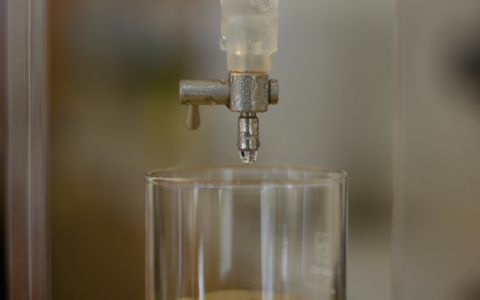Plastics can often be found where you would not expect to find them. They surround us when we are indoors, but also when we are outdoors. They are in consumer products, in the water and in the air.
Scientists have even found small plastic particles in the human placenta, so we all interact with plastic before we are born. They are probably responsible for the rise in many human diseases. The huge amount of plastic that moves around the world in the form of products, waste and miniature parts is also destroying nature and reducing its diversity.
The growing problems caused by plastics can only be prevented by global action.
This is why the UN has been working for several years on a new international treaty to protect our health and the environment. One of the last preparatory meetings for the initial text of the document will take place in Busan, South Korea, in late November and early December. This time, Arnika representatives will be attending the talks as part of the IPEN (International Pollutants Elimination Network) group of organisations.
Why is civil society participation essential?
Negotiations on the new Plastics Treaty have repeatedly been accompanied by restrictions on civil society participation, both during meetings and during official and unofficial closed-door negotiations. However, civil society participation is crucial to fulfilling the human right to a clean, healthy and sustainable environment. Civil society initiatives acting in the public interest bring expertise, scientific evidence and innovative solutions to the process that would not be considered without their involvement. These experts include representatives from low- and middle-income countries who bring unique insights and experiences from communities most affected by plastic pollution.
Without the participation of those directly affected by the impacts of plastic pollution, there is a risk that negotiations will be incomplete and the final outcome of the treaty will not be strong enough. Delegates should therefore ensure that processes are open, transparent and participatory, and that all future negotiations and treaty implementation processes allow for a full participation of civil society.
What should the Treaty include to protect health and the environment?
In concluding negotiations, delegates should ensure that health protection goals are backed up by effective global control mechanisms and that the treaty covers the entire life cycle of plastics. It is essential that the Treaty includes the following:
- Measures must be global, not just in the hands of individual countries. The plastics crisis is a global problem, so the solution must be international. National regulations could limit the effectiveness of the Convention and create barriers to trade, thereby exacerbating inequalities between countries. Global action would ensure a level playing field for all.
- Preliminary caution in situations of scientific uncertainty: The Treaty should ensure that new substances are not placed on the market without thorough testing. Regulating chemicals in groups would speed up safeguards and reduce the risk of a banned substance being replaced by another that is similarly dangerous.
- Reducing the production of plastics: The Treaty should include global mechanisms to reduce the production of plastics.
- Regulation of chemicals in plastics during the whole life cycle: Chemicals should be regulated not only in products, but throughout their life cycle and across sectors. Product regulation alone would severely limit the protection of workers and vulnerable populations.
- Adequate and predictable funding: A financial mechanism with a dedicated fund to provide additional and stable funding is essential for the success of the Treaty. This mechanism should be based on the polluter pays principle.
- Monitoring and transparent reporting: Strong monitoring and reporting requirements are essential to assess the effectiveness of policies. In addition to monitoring trends in plastic pollution, health indicators such as biomonitoring of chemicals from plastics, microplastics and nanoplastics should be monitored.
- Effective decision-making at conferences of the parties: The Treaty should allow for decisions to be taken by vote when consensus cannot be reached. This would prevent important decisions being blocked by a minority of countries, which has previously limited the effectiveness of, for example, the Climate Agreement.
Objectives and principles
In order for the new Plastics Treaty to truly protect human health, it is essential to focus on a health-based approach in its formulation of control and implementation measures. The main objective should be to enhance the protection of the most vulnerable populations, such as women, children, adolescents and indigenous peoples, throughout the life cycle of plastics. Essential elements include:
- Objective: The convention should clearly state that its purpose is to protect human health and the environment.
- Principles: Key provisions should include principles such as the protection of health, the right to a clean and healthy environment, the precautionary principle, the protection of human rights, the right of access to information or public participation in decision-making. Protection against conflicts of interest, fair transformation and ensuring decent working conditions are also important.
Control measures:
- Reducing plastic production: Without rapid action, plastic production will increase significantly, with negative impacts on climate, environment and health. The Treaty should include mechanisms to reduce plastic production, as scientific evidence shows that levels of chemical and plastic pollution threaten the stability of the global ecosystem.
- Regulation of toxic chemicals: The Treaty should introduce control measures to ensure the regulation and phase-out of toxic chemicals in plastics at all stages of their life cycle and in different industries. It should include criteria for assessing the safety of chemicals in terms of their impact on health, the environment and the functioning of the circular economy.
- List of priority chemicals: Proposals for a list of priority chemicals such as phthalates, bisphenols, flame retardants and PFAS were presented at the preparatory meeting. These substances have been shown to cause adverse health and environmental effects. Once the criteria are met, the treaty should allow for the phasing out of these substances, their replacement with safer alternatives and restrictions on the import and export of products containing them.
- Transparency and traceability: All information on chemicals used in the production of plastics should be publicly available through a standardised system throughout the whole life cycle of plastics. Transparency allows for faster identification of hazardous chemicals, promotes their substitution with safer alternatives and helps to ensure safe working conditions.
- Minimise emissions: It is necessary to minimise and monitor emissions and releases of harmful substances that could adversely affect health. This should include all emissions associated with the production, use and disposal of plastics.
- Remediation of existing plastic pollution: The Convention should emphasise the identification and remediation of major pollution hotspots, such as waste production and disposal sites, which pose a threat to human health and ecosystems.
- Waste management: The Treaty should ensure environmentally sound waste management that does not harm human health or the environment, for example by incineration or chemical recycling. Plastics containing toxic substances should not be recycled but safely disposed of using non-incineration technologies. The Treaty should also promote international cooperation in line with the Basel Convention.







